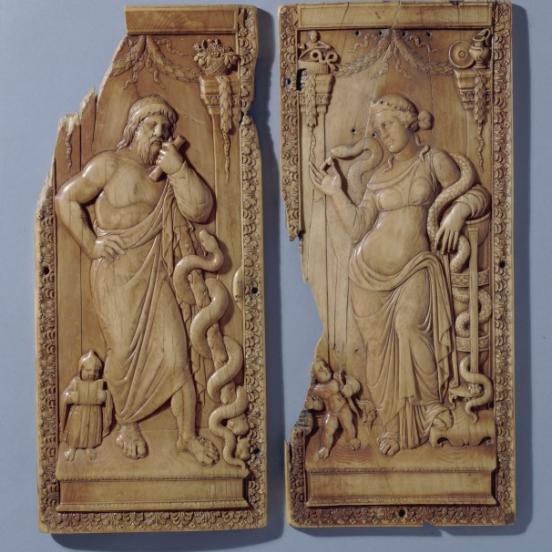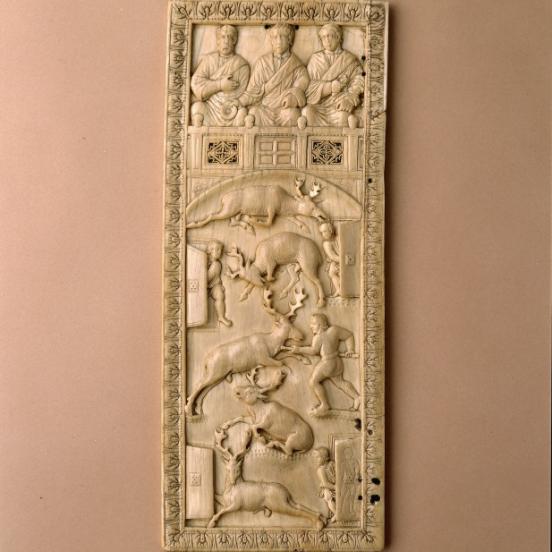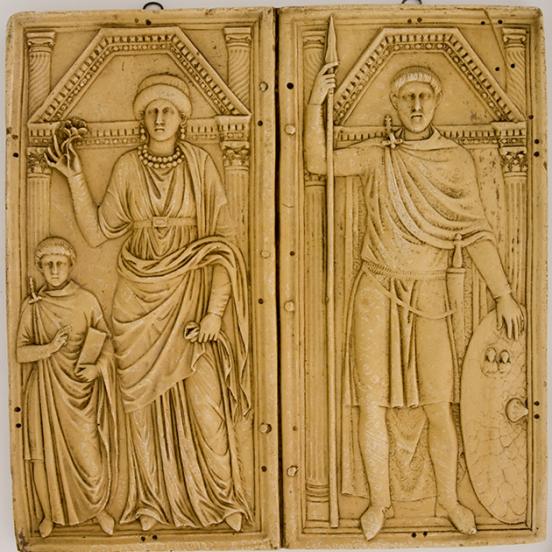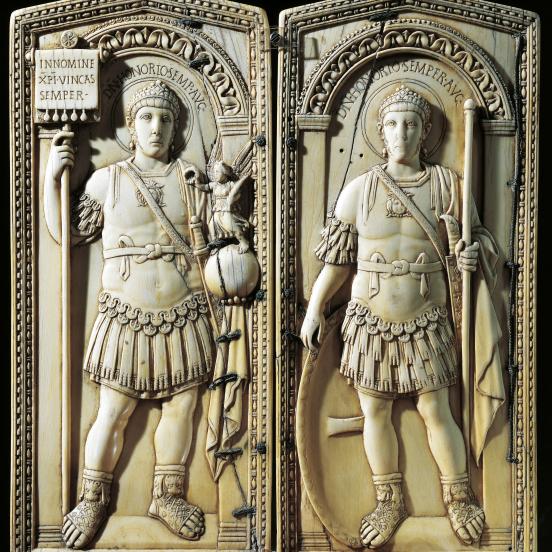Ivory diptychs
One of the most well-known types of artwork in the transition centuries between Antiquity and the Middle Ages is the group of diptychs, two ivory writing tablets decorated with reliefs that can be closed like a book. From a practical aspect they were preceded by ancient writing tablets made of various materials and by using a wax surface covering, on their inner side messages being scratched with a stylus. However, the ivory artefacts following those tablets were considered valuables in the last centuries of the Roman Imperial Age, as well as means of communication bearing messages with their decoration.
Their earliest type used in the 3rd and 4th centuries was made for personal use in one copy, so it was its owner’s personal valuable. The version that became customary in the 4th and 5th centuries involved affluent individuals having a diptych made in several copies to commemorate an important occasion (family celebration, religious ritual) in order to distribute them as gifts among the participants. The idea for the state itself to present participants of an important official event with such artefacts made in several copies must have stemmed from there. Thus the category of office diptychs emerged in the 5th century. They included the so-called consular diptychs, which were made until 541 when the post of consul ceased. Diptychs used in Christian church ceremonies represent the last group: they appeared in the Roman Empire, by then converted to Christianity, in the 5th century and their tradition continued right up to the 13th century in Byzantine art.
The reliefs of ivory diptychs in late Antiquity always contained important messages, not only via their inscriptions and the symbolism of their images, but also via their forms. At the turn of the 4th and 5th centuries representations connected to pagan rites and antique myths can still be found in private versions, as well as pieces depicting popular activities of contemporary society: hunting or its version in the entertainment industry, the attraction venatio held in arenas. A relaxed, harmonious and life-like way of representation often characterises these carvings – they continued the tradition of classical art. The most famous diptych among those presented by the state is the one in which a western Roman military leader and his family from the first half of the 5th century can be recognized. Its firm and rigid forms are in contrast to diptychs of ‘classical style’. The Probus diptych is another prominent example of a consular diptych. Its two tablets do not depict Probus, who was appointed a consul, but Western Roman Emperor Honorius in classical-like, soft style with every symbol of universal power: the labarum (military standard) with a Christian inscription, Victoria standing on the globe and the imperial sceptre used from the age of tetrarchy.




